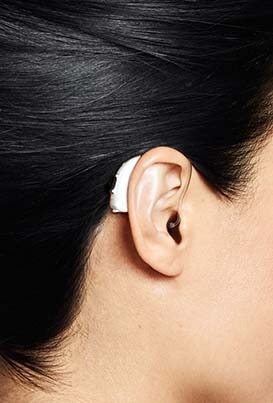Types of Hearing Aids
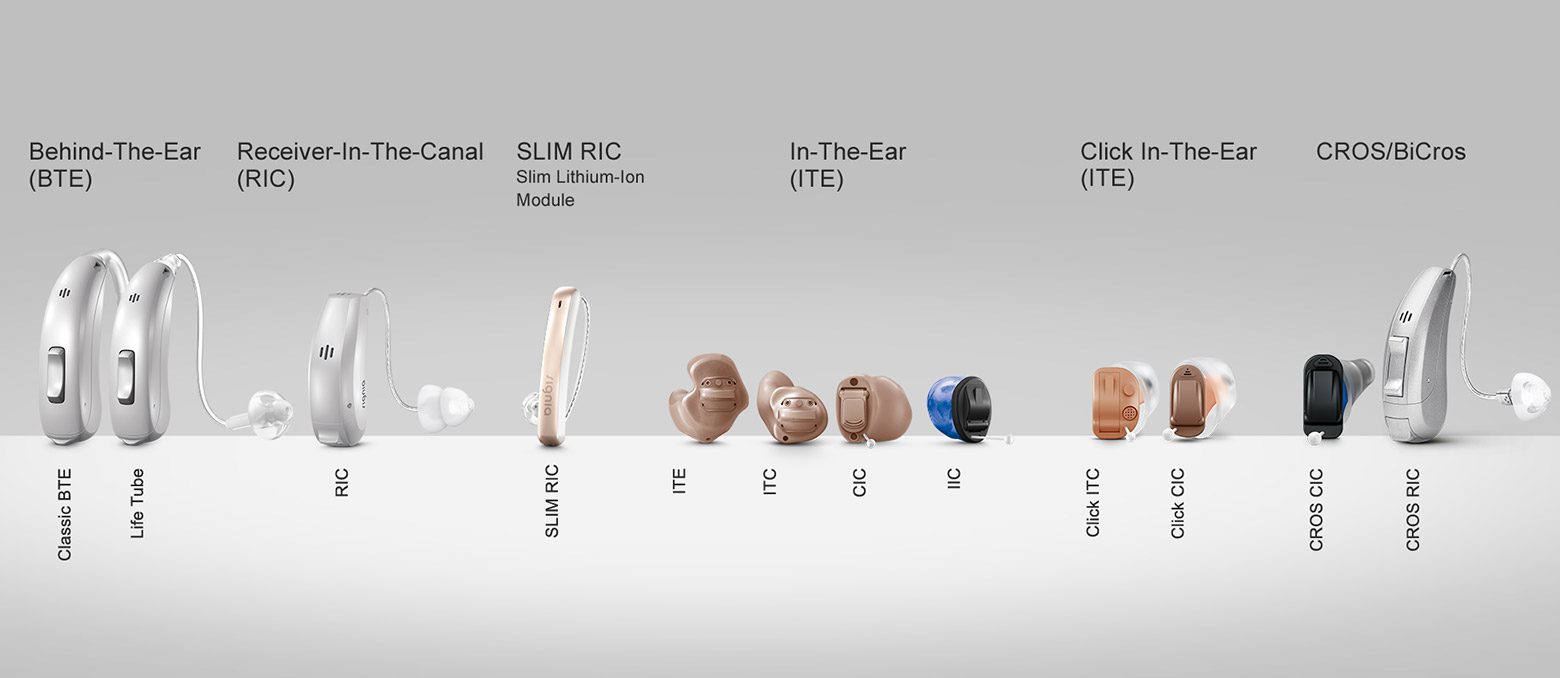
Depending on what you want from your hearing aid and what you are compatible with, you might be able to choose between a few different types of hearing aids. These product types/styles vary in size, but the primary differences are where they go. Some go in your ear, while others sit behind the earlobes. Different kinds of hearing loss call for different hearing aid styles, so you might not be compatible with everyone on this list. However, knowing about each one can help you make a decision if you have to choose between two or more
BTE (Behind-The-Ear Hearing Aid)
Depending on what you want from your hearing aid and what you are compatible with, you might be able to choose between a few different types of hearing aids. These product types/styles vary in size, but the primary differences are where they go. Some go in your ear, while others sit behind the earlobes. Different kinds of hearing loss call for different hearing aid styles, so you might not be compatible with everyone on this list. However, knowing about each one can help you make a decision if you have to choose between two or more
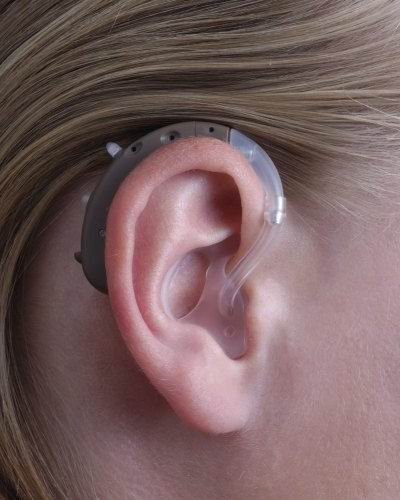
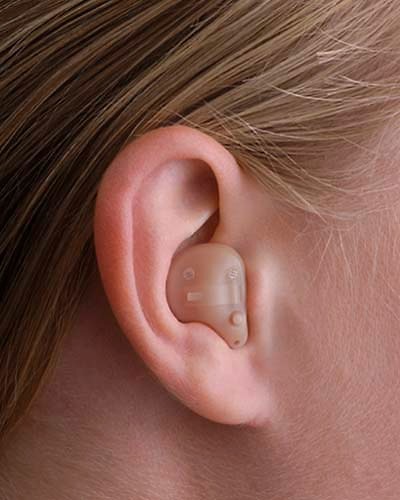
ITE (In-The-Ear Hearing Aid)
These sit in the bowl of the ear, lightly plugging the entrance to your ear canal. Smaller than BTE models, though somewhat more noticeable. Pros: easy to insert, and relatively flexible features. Cons: visually noticeable and less powerful than most BTE models.
ITC (In-The-Canal Hearing Aid)
ITC, or (in-the-canal hearing aid). Similar to the ITE model, but even smaller. This hearing aid sits just within the ear canal. Pros: relatively unnoticeable, and less of a “plugged” feeling during wear. Cons: discomfort, short battery life.
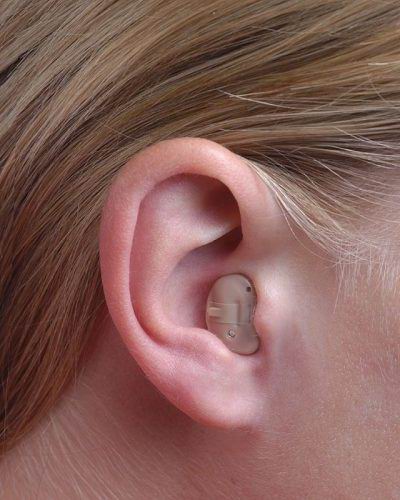

CIC (Completely-In-The-Canal Hearing Aid)
CIC, or (completely-in-the-canal hearing aids). These are the smallest type. They sit completely inside the ear. Pros: almost invisible, less phone feedback, and less wind noise. Cons: hard to adjust, fewer features, and short battery life.
RIC (Receiver-In-Canal Hearing Aid)
RIC, or (receiver-in-canal hearing aid). These are smaller than BTE models, but are easy to maneuver and offer a wide variety of high-tech features. They sit comfortably behind the ear, the RIC’s loudspeaker or “receiver” is located at the end of a thin ear wire, producing a superior listening experience with less energy consumption.
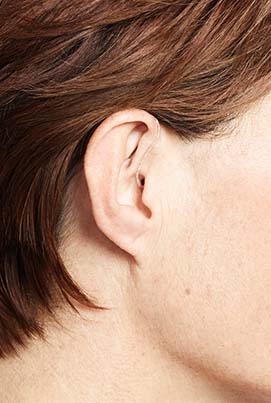
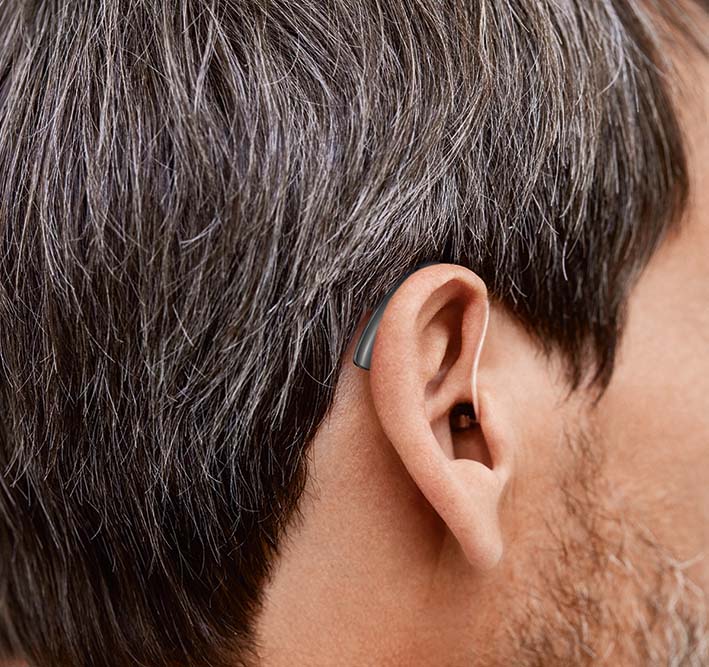
SLIM-RIC (Slim-Receiver-In-Canal Hearing Aid)
SLIM-RIC, or (Slim-Receiver-In-Canal). These are a unique new design pioneered by Signia. They work just like a normal RIC but offer a stylish slim-line form that redefines how a hearing aid can look and feel.
CROS or BiCROS
CROS or BiCROS devices enable people with unaidable hearing loss in one ear to hear what’s going on around them by receiving sound on that side and transmitting it to a hearing aid in the other ear.
